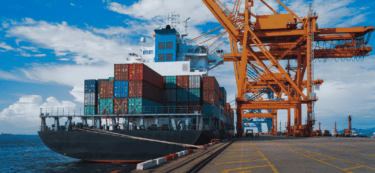
Blog
Industry
8 min read
12 Jul 2018


Blog
Industry
8 min read
12 Jul 2018

What do higher interest rates mean for your business’s supply chain? Quite a lot, actually. Read on to find out how your supply chain could be affected by increased interest rates.
After many years of low interest rates following the financial crisis, a rise in interest rates may finally be on the horizon. While the U.S. saw three hikes in 2017 and the Bank of England increased rates to 0.5% in November 2017 – the first increase in a decade – rates dropped to all-time lows again at the advent of the coronavirus pandemic in 2020. But the Federal Reserve is now indicating that tapering of monetary stimulus is coming, and interest rate hikes may follow soon after.
Higher interest rates may come as a welcome development where investments are concerned – but how do interest rates affect business supply chains? The short answer: it depends. For large, cash-rich companies, higher interest rates may reflect a more supportive economic environment and the opportunity to grow their businesses. But for smaller suppliers, the inherent higher cost of funding could spell trouble.
In a nutshell, higher interest rates mean that lending is discouraged and saving is encouraged. For consumers, a higher rate of interest generally means the amount of interest they pay on loans (from credit cards to mortgages) also increases, in turn decreasing their spending power. And borrowing money becomes more expensive for businesses, too. Cash, however, holds a higher potential reward as it can yield more in interest when held in the bank.
Although they may seem relatively innocuous at first, interest rates are a critical lever that can be pulled to manipulate the economy. When a central bank raises interest rates, there are significant knock-on effects that change consumer banks’ behavior, which in turn affects how companies and consumers spend and save. These are the main effects of raising interest rates:
The most obvious effect of a higher interest rate is that borrowing becomes more expensive. If you need to borrow – whether through a mortgage, credit card, or loan – you’ll likely end up paying more in interest over the course of your repayment period. This is especially impactful to businesses, who generally lend much more than consumers to invest in growth or weather storms. High interest rates essentially hinder companies in their pursuit of debt-led growth if the cost of borrowing becomes too great to outpace the return on investment.
On the other hand – higher interest rates also means that savings generally yield more in interest. This is good news for cash-rich companies, as they can safely keep their reserves in a high-interest bank account and outpace inflation, resulting in a growing balance sheet. However, it should be noted that even in high interest rate economies, interest rates for savings will generally lag far behind interest rates for borrowing.
Another, less obvious, effect of high interest rates is that they will typically strengthen the native currency of the country raising them. This is because domestic assets, like treasury bonds, will become more attractive investments to foreign money, resulting in an inflow of money from other countries and a subsequent increase in the relative purchasing power of the native currency.
It’s important to consider how your suppliers, and indeed the whole supply chain, could be affected by rising interest rates, and what the knock-on effect could be for your business. Some possible effects of higher interest rates on the supply chain include:
In practice, of course, not all buyers are large corporates, and not all suppliers are SMEs. The impact felt by individual companies will depend on a number of variables, including the size of the company, its position within the supply chain and the industry sector it operates in, as well as its access to short and long-term borrowing and the associated costs.
While larger firms tend to have more funding options available, they can still experience challenges when interest rates rise, depending on the length and intensity of interest rate pressures and the additional costs incurred.
That said, it’s important to ask how robust your supply chain is today, whether there are any risks that could be caused or exacerbated by higher interest rates – and how these risks could affect different players up and down the supply chain. In other words, a rising rate environment can provide a good opportunity to review your supply chain health and explore how you can protect your business from possible disruption.
It’s also worth considering that non-traditional sources of capital may become more important in a higher rate environment. With the cost of funding from traditional lenders likely to rise, companies may have more to gain from looking at alternative providers – for example, by adopting a supply chain finance solution.
Supply chain finance can help companies address the pressures of a rising rate environment in different ways. First and foremost, it can reduce the cost of capital for smaller suppliers. This means that the funding constraints brought about by higher interest rates can be mitigated – reducing both the risk of disruption for parties up and down the chain, and the likelihood that suppliers will ramp up their prices.
This approach can also bring direct working capital benefits. By enabling you to pay invoices later than you would otherwise, supply chain finance means you can free up your own working capital and achieve greater stability, without adversely affecting your suppliers. Conversely, cash-rich companies may be able to put their excess cash to work by taking advantage of opportunities such as early payment discounts.


Expert Advice
High volatility, technology-led innovation and hyper-competitive market conditions has accelerated the rate of change in business.


Expert Advice
Use these 10 supply chain KPIs to measure your supply chain performance and find opportunities for optimization.


Expert Advice
Adopting the following supply chain management best practices can lay the groundwork for a successful strategy and build a supply…